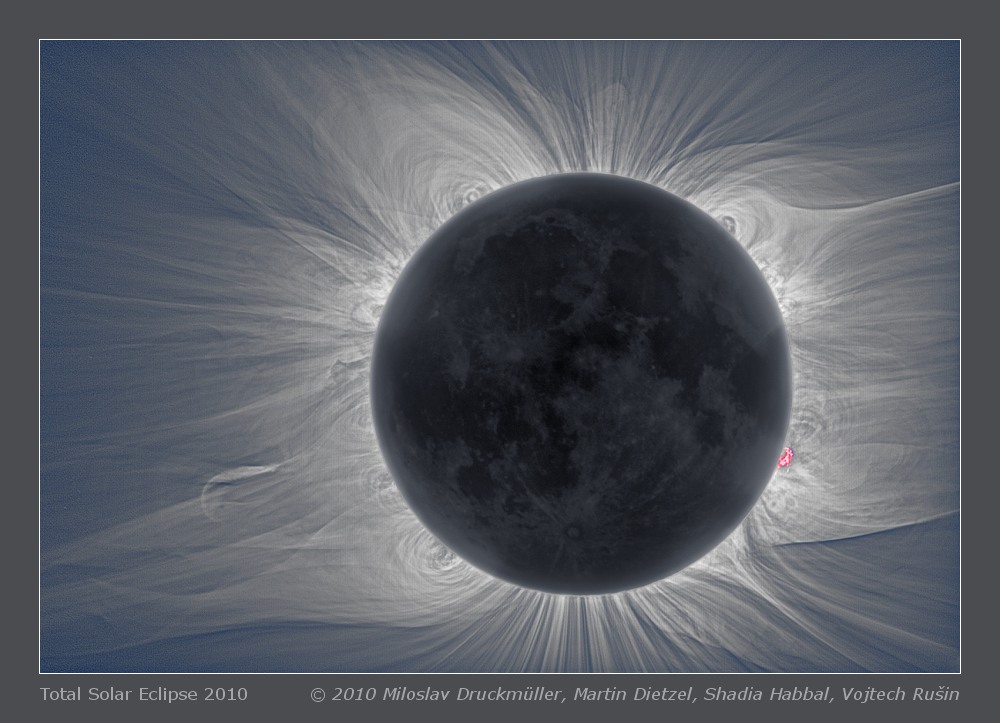
High resolution image of the solar corona
The data for this image creation were obtained by means of our longest focal length equipment
(Ritchey-Chrétien with 203 mm diameter and 1624 mm focal length) and computer controlled
(Linux Fedora Multican program made by Jindřich Nový) Canon EOS 5D camera. The equipment was placed
on a massive ultra-precise Astelco NTM 500 mount. During the totality 89 images were taken. Because
the sky was not absolutely clear during the whole totality it was necessary to remove images
significantly influenced by clouds. After careful inspection of all eclipse images, 61 images were
chosen. These images were calibrated by means of over 600 dark frames and flat-field images. The
position of the Moon represents the situation 157 seconds after the second contact. The display of
the solar corona, lunar surface and stars in the resulting image are highly beyond the ability of
human vision during the eclipse. The weakest stars visible in the image are of about magnitude 11.
The stars are a little bit blurred by the motion of the Sun during the 4.5 min long eclipse.
Click on the image or on the following reference to display the
higher resolution image version (2.5 MB, PNG format).
|
| Image | Tse2010t_rc1.jpg |
| Date | 11. 07. 2010 |
| Time | 2nd contact 18:45:36 UT, 3rd contact 18:50:05 UT
Total eclipse duration 4 m 29 s |
| Place | Tatakoto Atoll, French Polynesia |
| Coordinate | S 17° 20' 39.3'', W 138° 27' 3.1'', Alt. 6 m |
| Conditions | Partially clear, partially thin clouds |
| Optics | GSO RC 8'', Ritchey-Chrétien f/8, 203 mm/1624 mm |
| Camera | Canon EOS 5D digital camera (ISO 100) |
| Exposure | 1/500 s - 2 s |
| Processing | Composition of 61 eclipse images. Eclipse images calibrated by means of dark frames and flat-fields, aligned by means of phase correlation, composed by means of LDIC 5.0 software, processed using Corona 4.1 in order to visualize coronal structures. Final processing was done using ACC 6.1 software.
Image processing by Miloslav Druckmüller |
| Software | Astro D3F 2.0, PhaseCorr 6.0, MPA 1.0, LDIC 5.0, Corona 4.1, Sofo ACC 6.1 |
| Orientation | Image must be rotated 3.05° anti-clockwise to achieve standard orientation i.e. solar north up. |
| Copyright | © 2010 Miloslav Druckmüller, Martin Dietzel, Shadia Habbal, Vojtech Rušin |

|
Miloslav Druckmüller
Institute of Mathematics, Faculty of Mechanical Engineering
Brno University of Technology, Czech Republic
druckmuller@fme.vutbr.cz
|
Page last update: 27.11.2019
|
|

